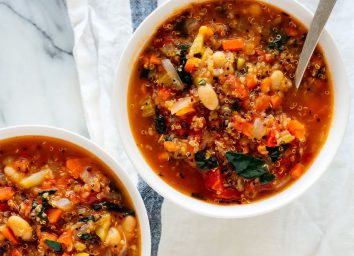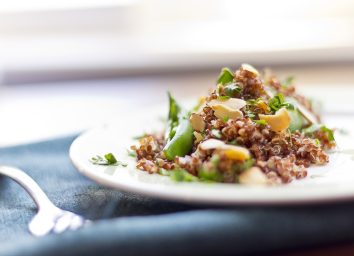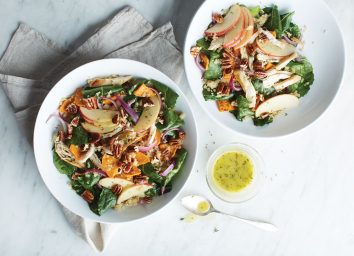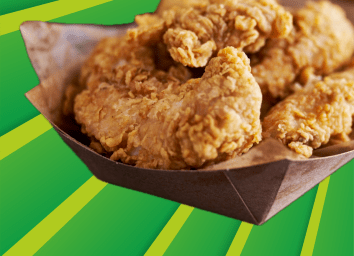What Happens To Your Body When You Eat Quinoa
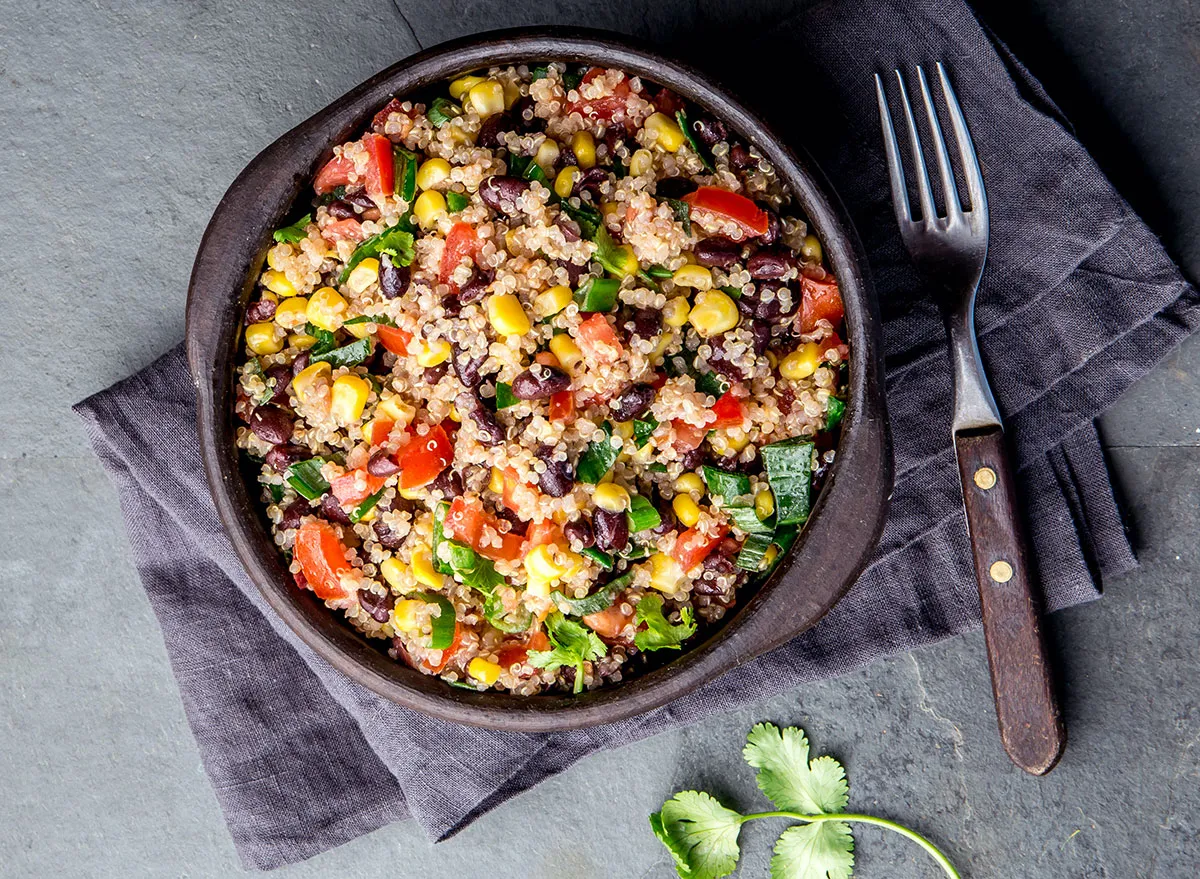
Quinoa began exploding in popularity over the past decade, and the superfood has yet to lose its momentum. This uniquely high-in-protein grain has a pleasant, nutty flavor and pairs well with vegetables and lean protein, including salmon and chicken. Outside of savory dishes, quinoa even complements the oats in a bowl of oatmeal with nut butter and berries sprinkled on top. But what exactly happens to your body when you eat quinoa? However you choose to eat it, one thing is for certain—you’re bound to reap some major health benefits.
Below, we detail some of those amazing benefits you’ll experience when you eat quinoa on a regular basis. And for even more healthy tips, be sure to check out our list of The 7 Healthiest Foods to Eat Right Now.
You’ll have more success in the bathroom.
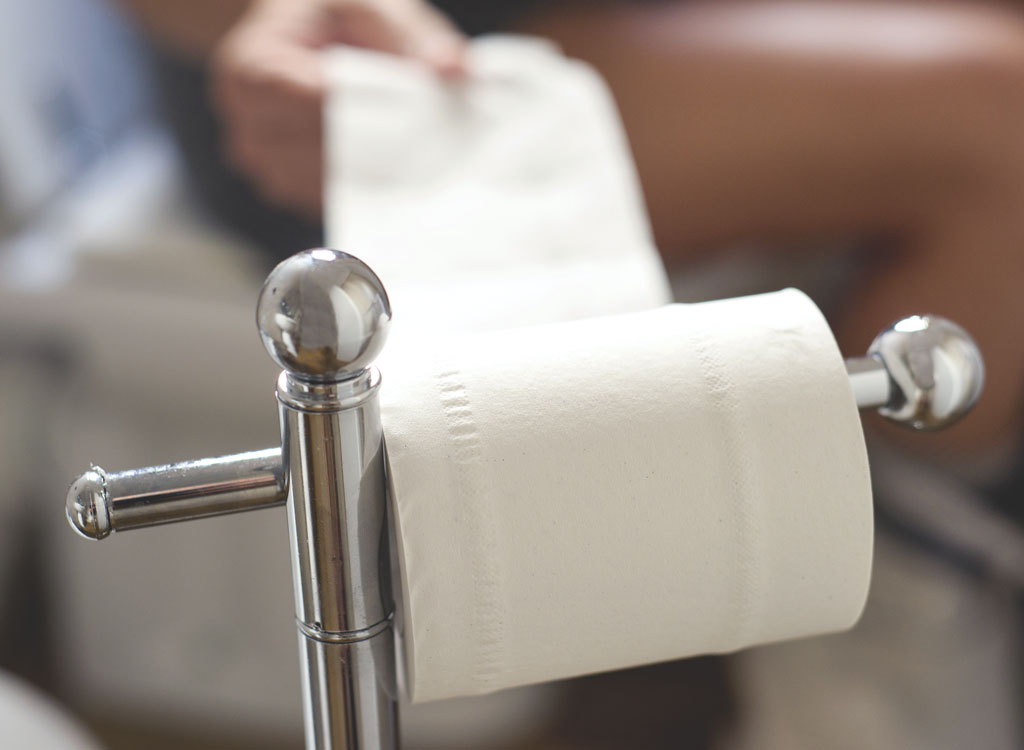
If you’ve never had quinoa before, you may not know that it’s a good source of fiber, specifically insoluble fiber. This means that it travels through the digestive tract without being absorbed or broken down. Just one cup of cooked quinoa provides about 5 grams of fiber.
Women should aim to consume about 25 grams of fiber per day whereas men should strive to eat about 38 grams daily to stay regular. Eating more fiber may also help to alleviate gastrointestinal discomfort, including bloating or gas.
Be sure to check out 9 Warning Signs You’re Not Eating Enough Fiber if you’re having stomach aches or other GI-related issues.
It may help boost your iron levels.
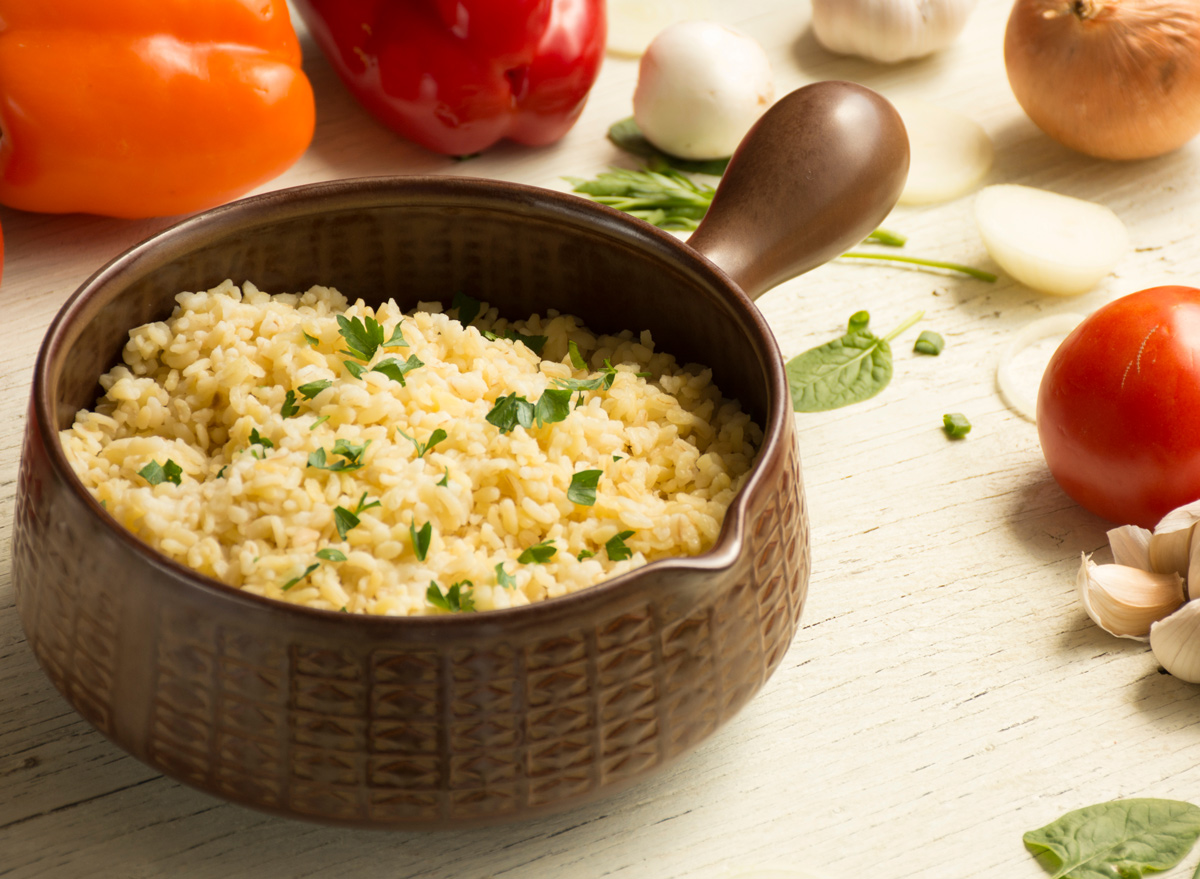
Quinoa provides a great source of iron, a key mineral that may not be as rich in vegetarian or vegan diets. Women are also at risk of iron deficiency because of menstruation, so it’s important they eat plenty of iron daily to maintain energy levels. A woman between the age of 19 and 50 needs about 18 milligrams of iron each day and one cup of quinoa contains about 2.8 milligrams, which satisfies about 15% of their daily need.
You’ll feel full for fewer calories.
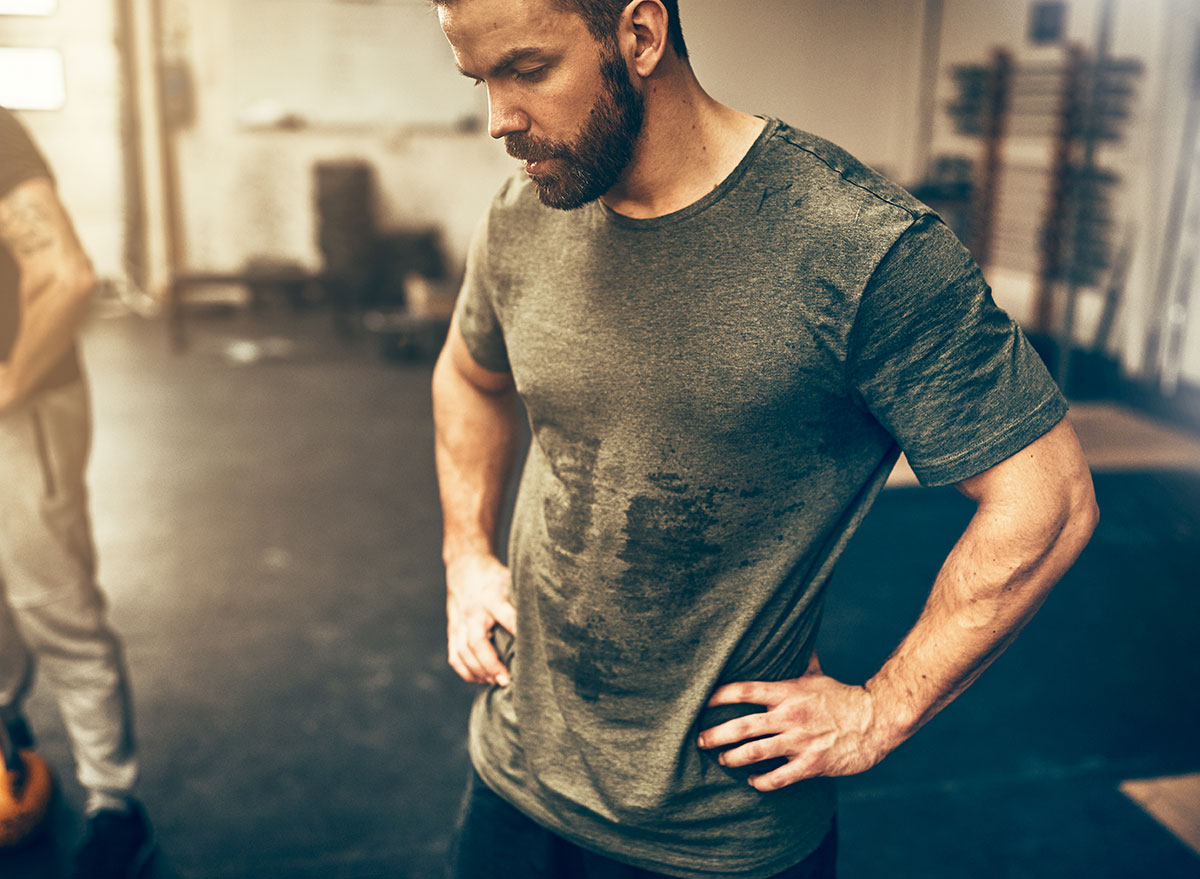
If you’re working out in the late afternoon or evening, it’s especially important to eat a filling, nutrient-dense meal so that you can sustain energy throughout your workout. However, the key is to not eat too much. One cup of cooked quinoa packs about 8 grams of protein, which can help keep you full and tide you over until your post-workout meal.
Not to mention, one cup of cooked quinoa only contains about 222 calories, so you’re getting a substantial amount of protein (especially for a plant-based food) for not that many calories. Quinoa also contains all nine essential amino acids, which makes it a complete protein.
It could help stabilize your blood sugar levels.

Quinoa has a low glycemic index (GI), meaning that it won’t spike your blood glucose (sugar) levels after you eat a bowl of it. This is especially important for those who have type 1 or type 2 diabetes as eating high GI foods (such as white bread) can put them at risk of hyperglycemia, the state in which blood glucose levels are too high.
If these levels remain too high over a long period of time, this could cause various long-term health complications including damage to the nerves (neuropathy) and kidneys (nephropathy).
Those who are gluten-free can enjoy without worry.
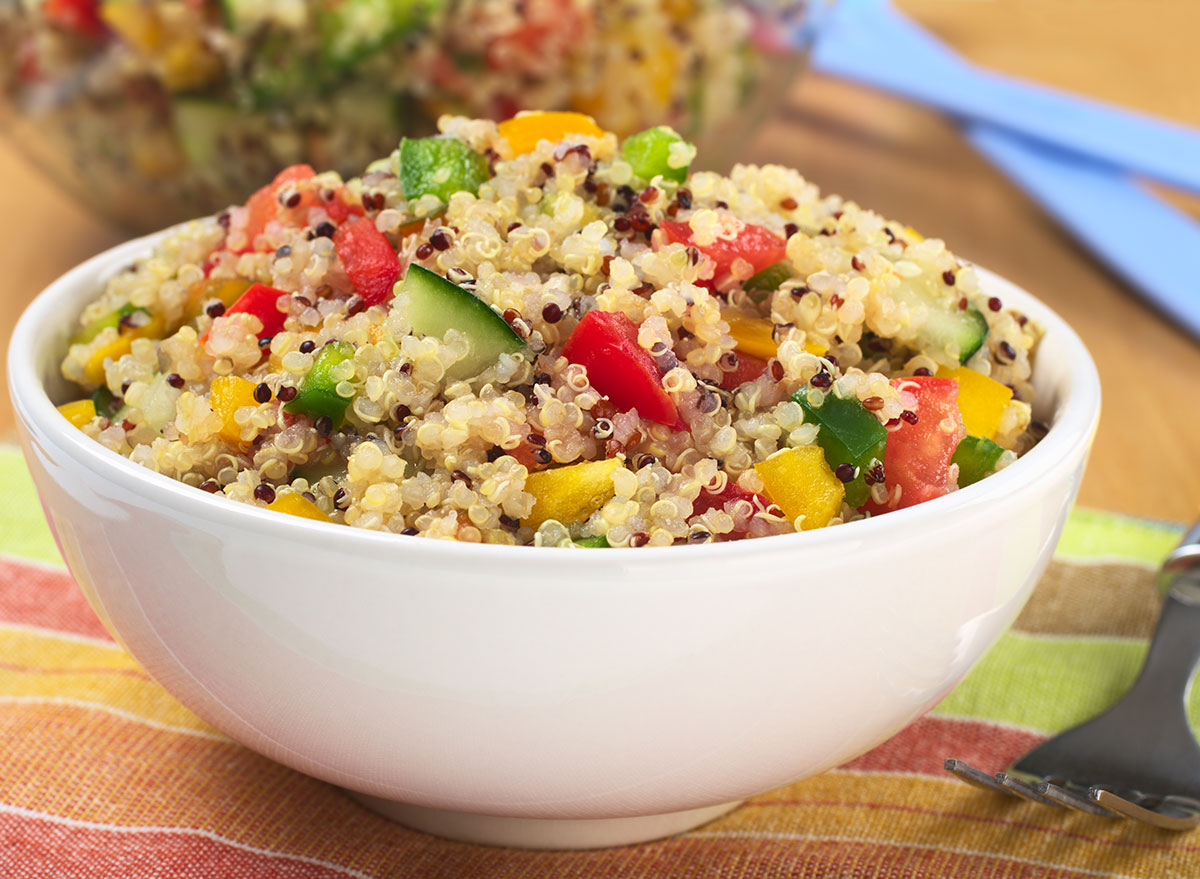
While not grain-free, quinoa is gluten-free which is helpful for those who have celiac disease or are gluten intolerant or sensitive. A lot of gluten-free substitutes for flour such as potato, corn, and tapioca are largely void of nutrients and antioxidants. Using quinoa flour, however, could help you increase your intake of both.
And, for ideas on how to spruce up your bowl of quinoa, check out 30 Quinoa Recipes for Weight Loss.
